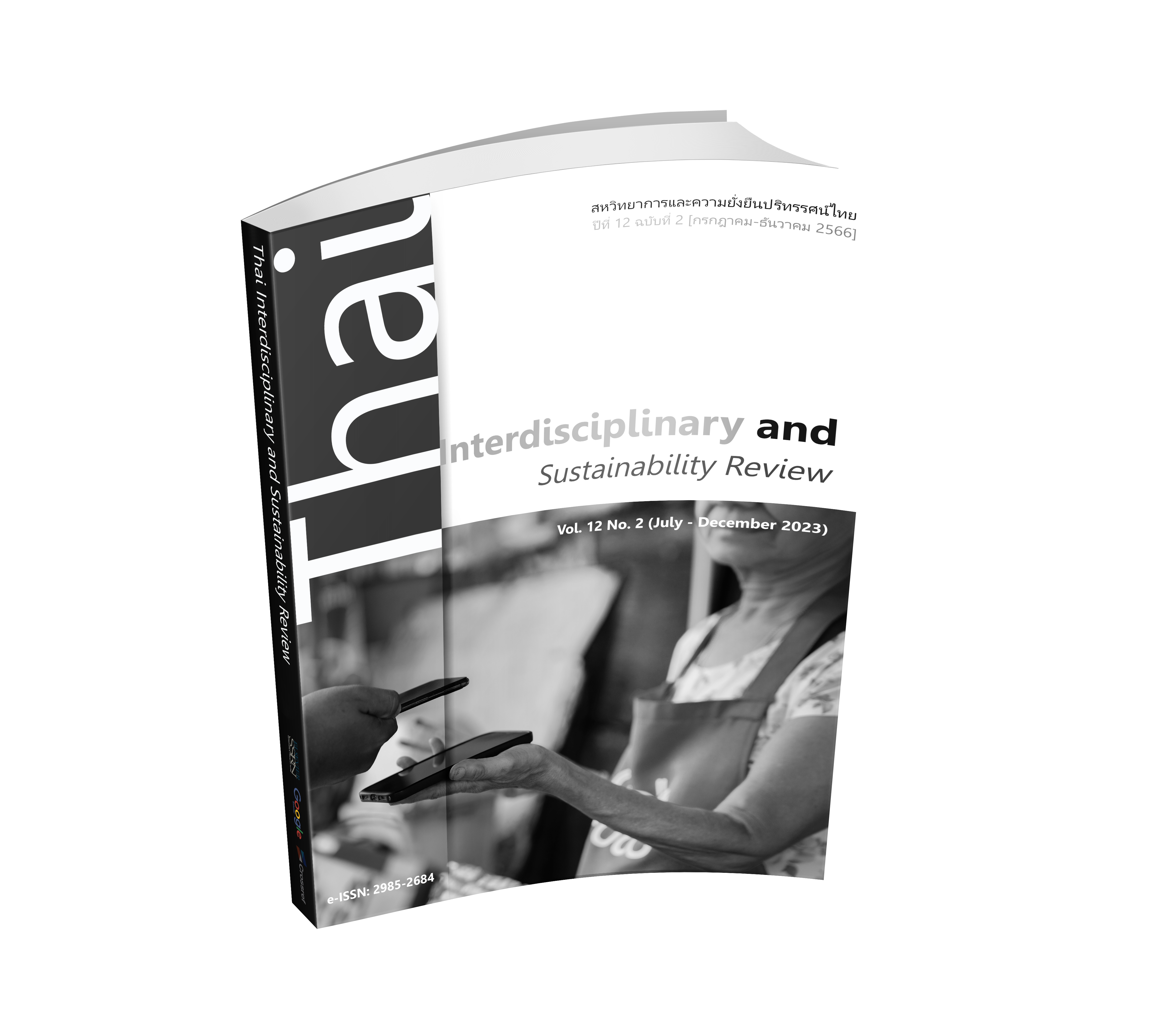THE MANAGEMENT OF THE ELDERLY QUALITY OF LIFE DEVELOPMENT AND CAREER PROMOTION CENTERS
DOI:
https://doi.org/10.14456/tisr.2023.11Keywords:
Elderly, Elderly Quality of Life Development and Career Promotion Center, Local Administrative OrganizationAbstract
The objectives of this research article were to explain 1) the management and operations of the Elderly Quality of Life Development and Career Promotion Centers, 2) to explain the participation in the management and operations, 3) to explain factors affecting success in the management and operations, and 4) to propose the management development of the Elderly Quality of Life Development and Career Promotion Centers. The findings revealed that all Elderly Quality of Life Development and Career Promotion Centers were mainly supported by Local Administrative Organizations in establishing and driving the centers' operations along with committees that have been selected by different methods. Resource acquisition in each center varied. Some were supported by LAOs while others were supported through various projects or contests. Regarding participation in the operation or management, participating included Provincial Offices of Social Development and Human Security, Local Administrative Organizations, the National Health Security Office, the people sector, and other agencies, but the participation from the private sector was not obvious. The factors affecting the success of management and operation consisted of LAOs, leaders, acceptance, budget, policy, and participation of members of LAOs.
Downloads
References
กรมการปกครอง. (2566). สถิติประชากรรายจังหวัด. สืบค้นจาก https://stat.bora.dopa.go.th/StatMIS/#/ReportStat/3.
ทิพวรรณ หล่อสุวรรณรัตน์. (2557). ทฤษฎีองค์การสมัยใหม่. กรุงเทพฯ: แซทโฟร์พริ้นติ้ง.
ทิพวรรณ หล่อสุวรรณรัตน์. (2558). ทฤษฎีองค์การ: มุมมองต่างกระบวนทัศน์. กรุงเทพฯ: แซทโฟร์พริ้นติ้ง.
Bergmann, A., Stechemesser, K., & Guenther, E. (2016). Natural Resource Dependence Theory: Impacts of Extreme Weather Events on Organizations. Journal of Business Research, 69(4), 1361-1366.
DiMaggio, P., & Powell, W. (1983). The Iron Cage Revisited: Institutional Isomorphism and Collective Rationality in Organizational Fields. American Sociological Review, 48(2), 147-160.
Dobbin, F., & Schoonhoven, C. (2010). An Organizational Sociology of Stanford's Organization Theory Renaissance. In Stanford's Organization Theory Renaissance, 1970-2000 (pp. 17-41). Warrington: Emerald Group Publishing Limited.
Dress, J., & Heugens, P. (2013). Synthesizing and Extending Resource Dependence Theory: A Meta-Analysis. Journal of Management, 39(6), 1666-1698.
Gaffney, N., Kedia, B., & Clampit, J. (2013). A Resource Dependence Perspective of EMNE FDI Strategy. International Business Review, 22(6), 1092-1100.
Gortner, H. (1981). Administration in the Public Sector. 2nd ed. New Jersey: John Wiley & Sons.
Hatch, M., & Cunliffe, L. (2013). Organizational Theory: Modern, Symbolic, and Postmodern Perspective. 3rd ed. Hampshire: Ashford Colour Press.
Hillman, A., Withers, M., & Collins, B. (2009). Resource Dependence Theory: A Review. Journal of Management, 35(6), 1404-1427.
International Association for Public Participation. (2018). IAP2 Spectrum of Public Participation. Retrieved from www.iap2.org/resource/resmgr/pillars/Spectrum_8.5x11_Print.pdf.
Lee, H., & Hashimoto, S. (2018). Governing Care Provision: A Comparative Perspective on Japan and Korea. Development and Society, 47(1), 39-61.
Lorsuwannarat, T. (2017). Public Participation in Budgeting: The New Path of Budget Reform in Thailand. International Journal of Public Administration, 40(5), 385-400.
Malatesta, D., & Smith, C. (2011). Resource Dependence, Alternative Supply Sources, and the Design of Formal Contracts. Public Administration Review, 71(4), 608-617.
Malatesta, D., & Smith, C. (2014). Lessons from Resource Dependence Theory for Contemporary Public and Nonprofit Management. Public Administration Review, 74(1), 14-25.
Pfeffer, J., & Salancik, G. (1978). The External Control of Organizations: A Resource Dependence Perspective. New York: Harper & Row.
Pugliese, A., Minichilli, A., & Zattoni, A. (2014). Integrating Agency and Resource Dependence Theory: Firm Profitability, Industry Regulation, and Board Task Performance. Journal of Business Research, 67(6), 1189-1200.
United Nations. (2017). World Population Ageing Report. New York: United Nations.
Verbruggen, S., Christiaens, J., & Milis, K. (2011). Can Resource Dependence and Coercive Isomorphism Explain Nonprofit Organizations’ Compliance with Reporting Standards?. Nonprofit and Voluntary Sector Quarterly, 40(1), 5-32.
Williamson, O. (1990). Organization Theory: From Chester Barnard to the Present and Beyond. New York: Oxford University.
World Bank Group. (2021). Caring for Thailand’s aging population. Washington, D.C.: World Bank Group.

Downloads
Published
How to Cite
Issue
Section
License
Copyright (c) 2023 Authors

This work is licensed under a Creative Commons Attribution-NonCommercial-NoDerivatives 4.0 International License.









.png)


